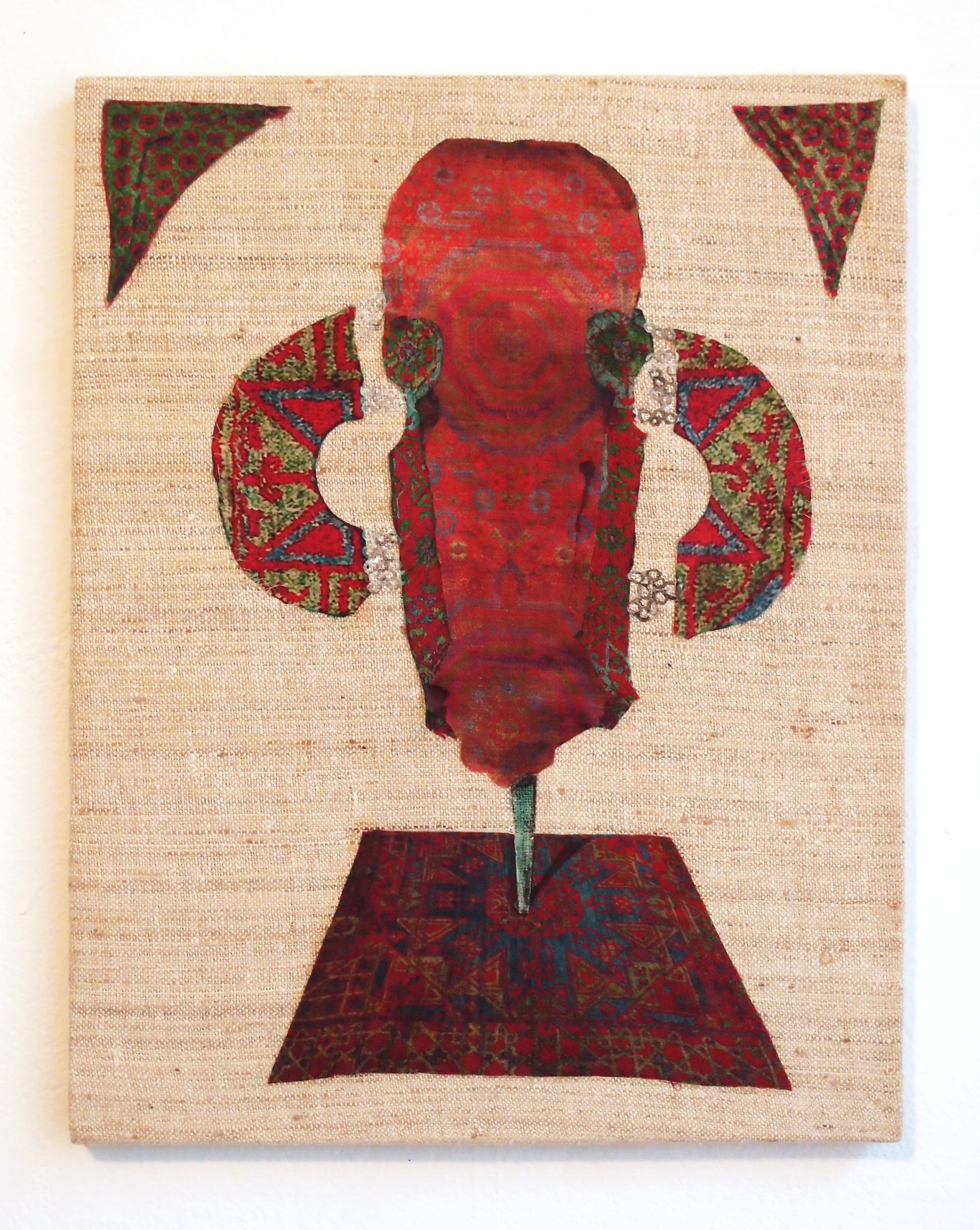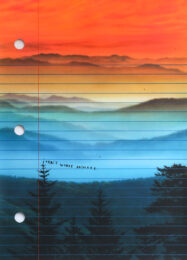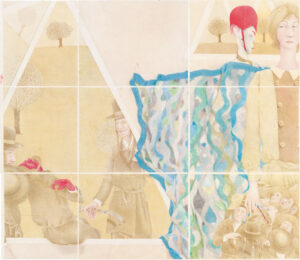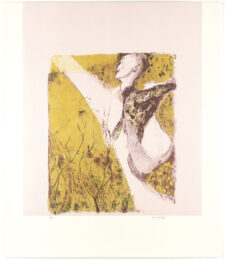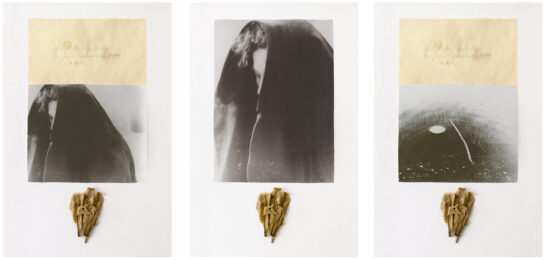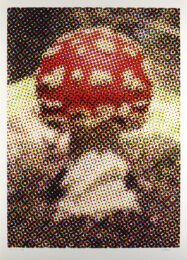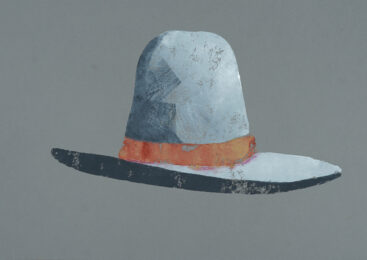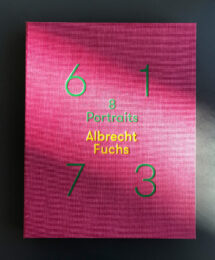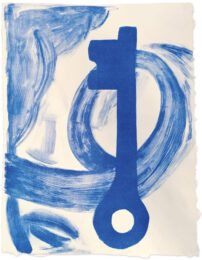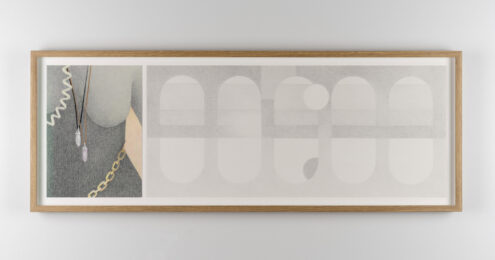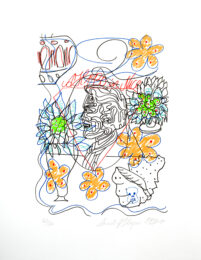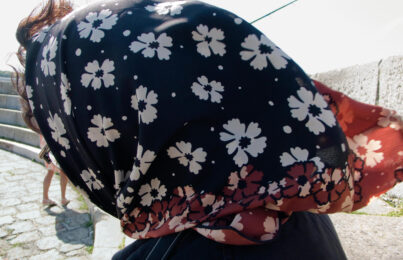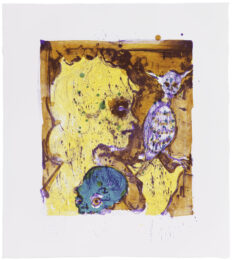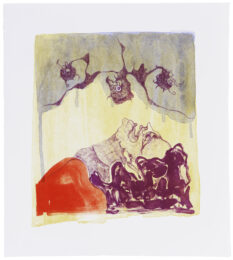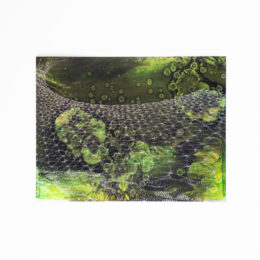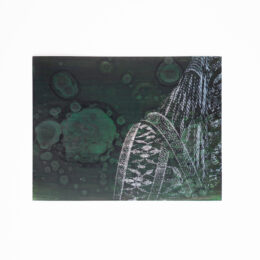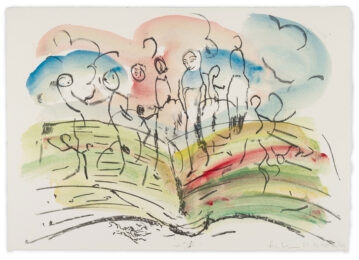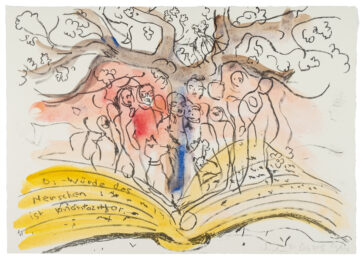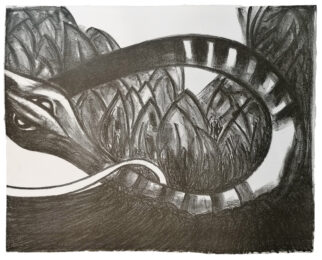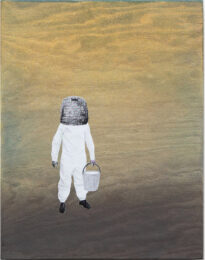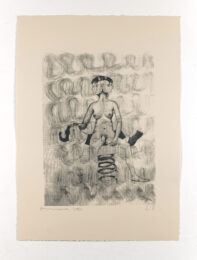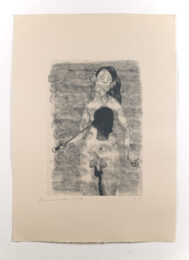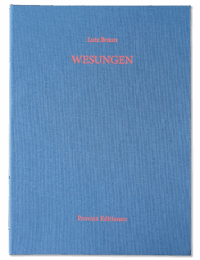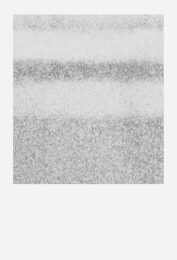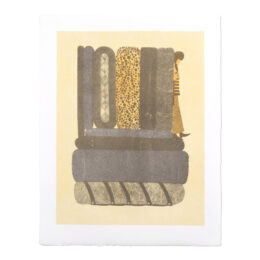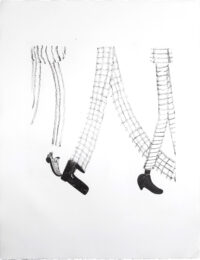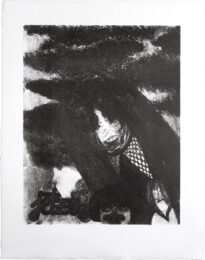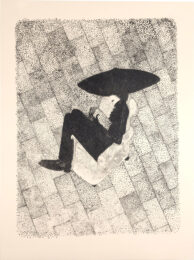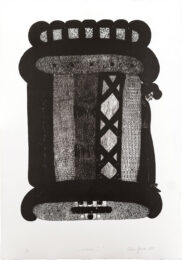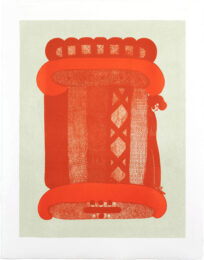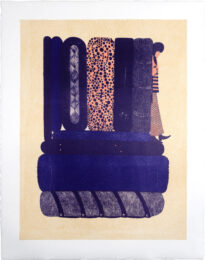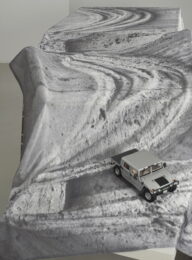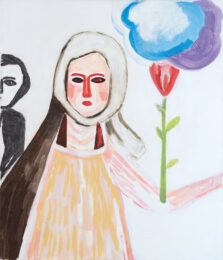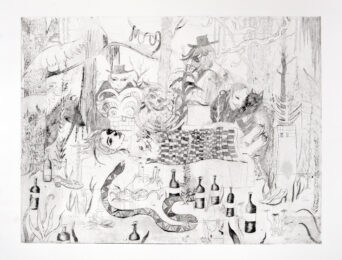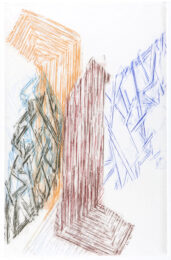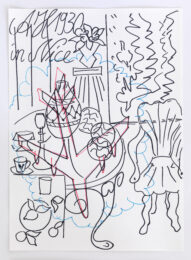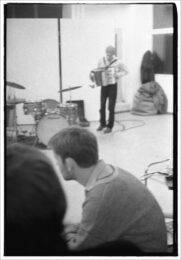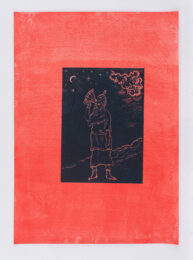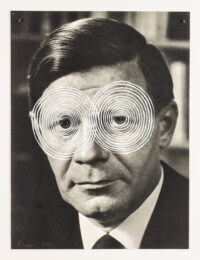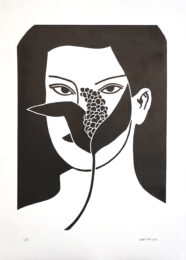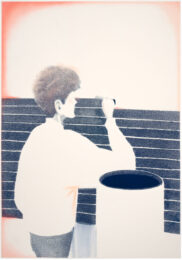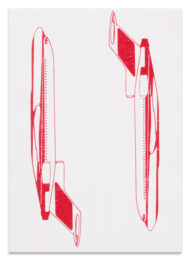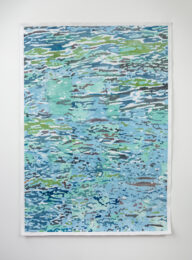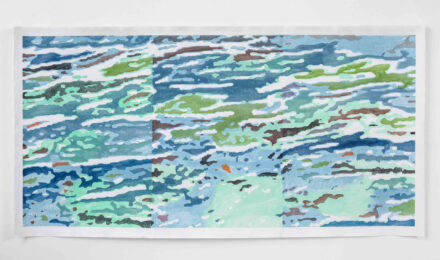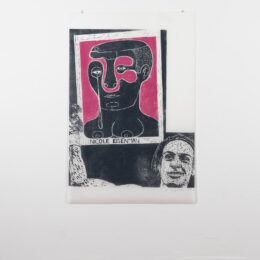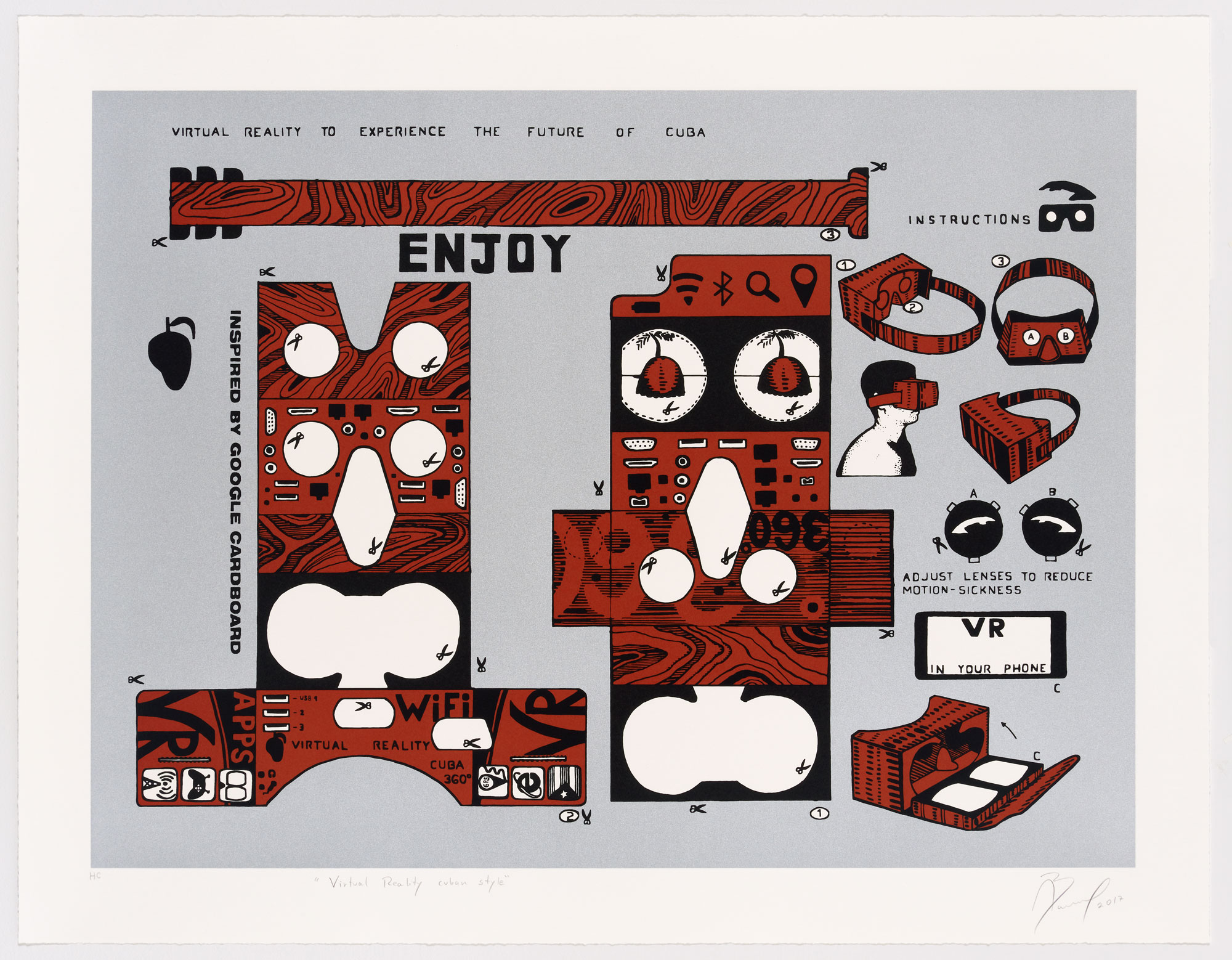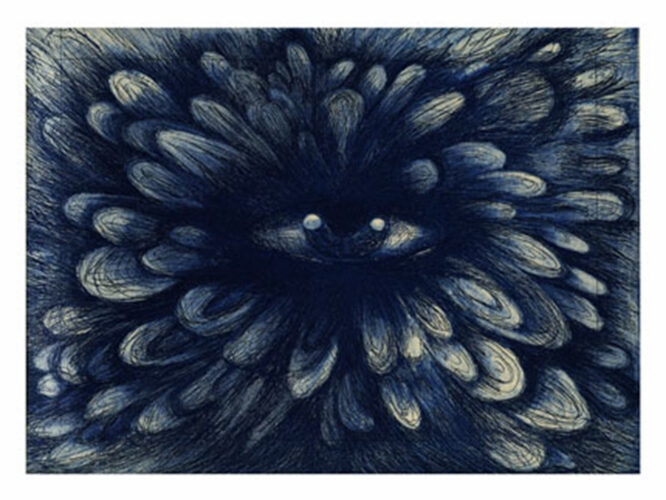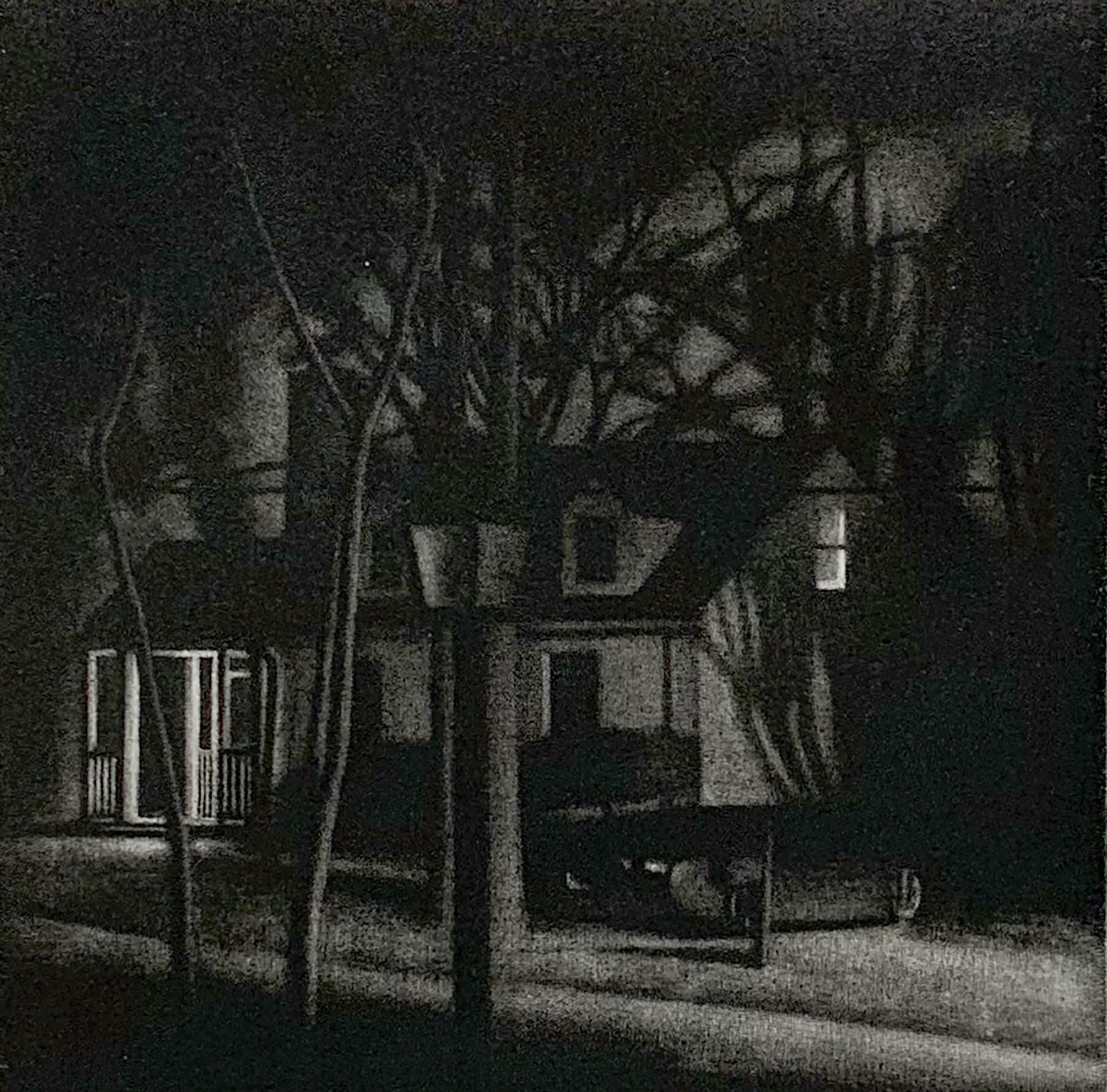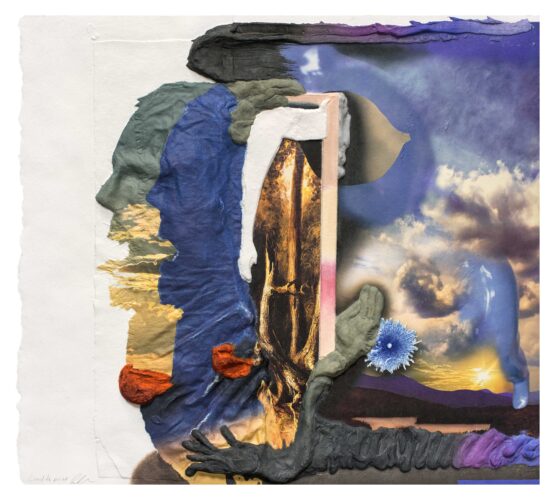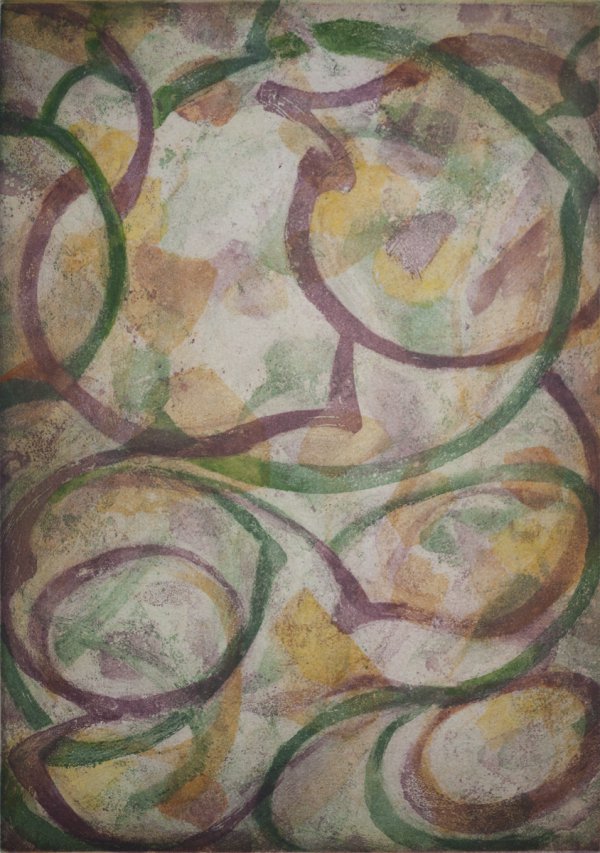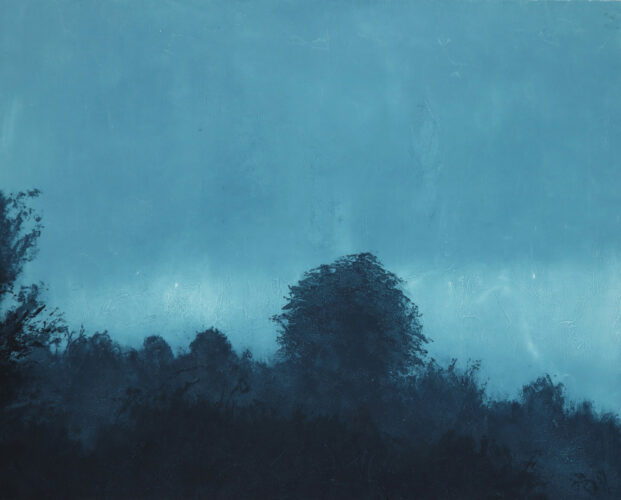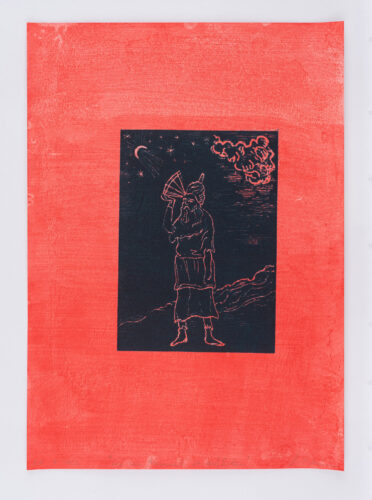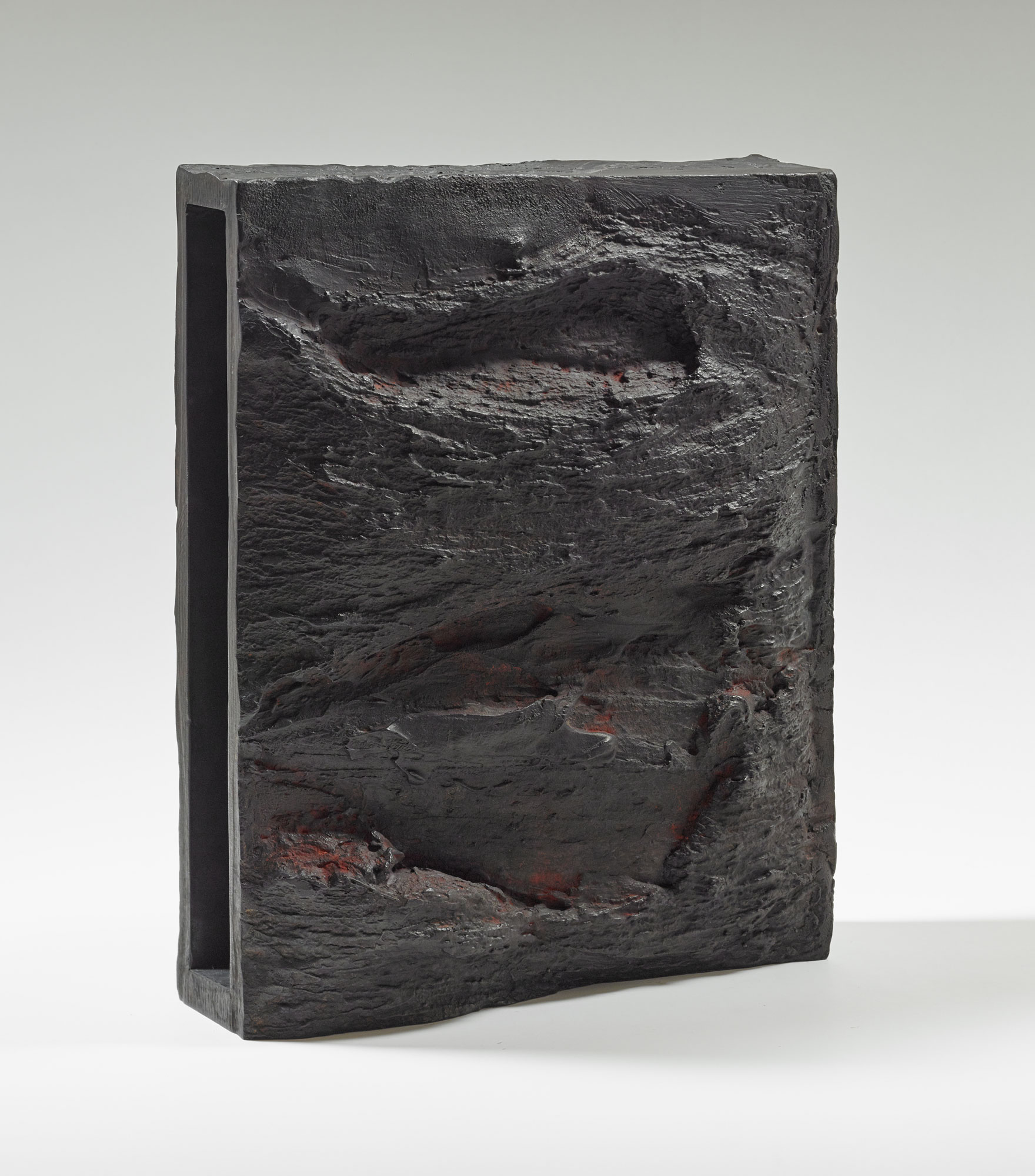Details — Click to read
Shannon Bool
(Forensics for a Mamluk) Horse Mask, 2013
Collage, fine art print and oil on silk
45 x 35 cm
Unique, from a series of five uniques
At the center of Bool’s exhibition at Provinz “Forensics for a Mamluk” (2013) is a video work, with the same title and year, which Bool recently developed over the course of her residency at the Villa Romana in Florence, Italy. The subject is one of the rarest and most valuable carpets in the world. The giant Egyptian Mamluk carpet, (from the first half of the 16th Century) was forgotten among stored items of the Palazzo Pitti until it was rediscovered in a sealed chamber at the palazzo by Alberto Boralevi, a Florentine carpet expert, in 1982. The video is comprised of segments showing extreme close ups, digital adjustments of the carpet’s RGB colour palette, and larger pan views of the carpet’s motif and texture.
Like other of Bool‘s current works the video is concerned with the complexity of how viewers experience the “overload” of art history, or the Renaissance in Florence (i.e. Stendhal Syndrome). The video seeks to function as a sort of navigational guide to experience the mathematical and architectural qualities of the carpet’s composition and ornamentation. Forensics for a Mamluk (2013) presents an analytical bird’s-eye view of a masterpiece of decorative art, an object forgotten due to the historical bias that positioned the decorative arts as inferior to painting and sculpture. However, the Mamluk Carpet, an abstract and sublime creation, represents the geometrical sensibility of neighboring Islamic countries; cultures that provided essential contributions to Renaissance-era mathematics and scientific developments. By retrieving the carpet from the dark storage once again, Bool attempts to re-illuminate these existing ideas but to also to provide a „digital“ reading of the carpet to bring it to a contemporary context.
In series of small format collages of the same title Shannon Bool also refers to motifs of the Mamluk carpet. Isolated ornaments and fragments of the piece provide the substructures for collages of abstract Mamluk armour und thus comment on the his- toric mamluks as famous mercenary soldiers and slaves. The collages interweave the iconography of „hard“ ancient armour with the „softer“ geometry of the carpet.

